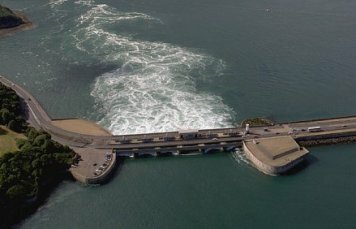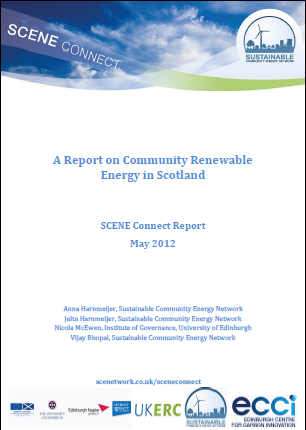Tidal Energy Generators
Introduction to Tidal Energy Generators
Tidal energy is a renewable energy generated from the natural ebb and flow (high and low tides) of coastal tidal waters and estuaries, where water levels chance twice daily, filling and emptying natural basins along the shore line. The currents flowing in and out of these basins can be used to turn mechanical devices to produce electricity. It is estimated the UK has around 50% of Europe’s tidal energy resource with a potential to generate around 16 TWh/year. Around 64% of this is located in the remote north of Scotland.
Tidal energy is different from Wave energy which extracts energy from the movement of ocean waves on the surface of the sea.

Technical Information
There are two types of tidal power generation systems which can convert this potential energy source into electricity:
1) Tidal Barrage: Barrages are essentially dams across the entire width of an estuary, normally built with new infrastructure projects such as road crossings. Gates and turbines are installed along the barrage and when there is an adequate difference in the height of water on either side of the dam, the gates are opened and the ‘hydrostatic head’ that is created causes water to flow through the turbines (similar to hydro schemes), turning a generator to produce electricity.
Electricity can be generated by water flowing both into and out of a bay. As there are two high and two low tides each day, electrical generation from tidal power plants goes through periods of maximum generation every six hours.
2) Tidal stream generators / turbines: Essentially similar to wind turbines in design, but submerged in the water make use of the kinetic energy of moving water to power turbines. Some tidal generators can be built into the structures of existing bridges, involving virtually no aesthetic problems. Others are fully submerged and attached to the seafloor. They function best in areas where the water velocity is between 2 - 2.5 m/s, otherwise above this, the turbines experience heavy structural loads, and below this not enough energy generation takes place.

Cost & Scale
At the moment, tidal power requires high-scale infrastructure costs and so is currently being developed mostly by private companies and national governments. Tidal barrages have already been utilised already in France, America and elsewhere. However Tidal Turbine technologies are yet to be fully utilized- however, recent plans from the Scottish Government have set out to build 10 tidal turbines off the coast of Islay for the cost of £40million- potentially seeing energy generation for up to 5,000 homes.
Community Tidal Schemes
However in 2013, the first community owned tidal turbine will be installed and owned by the North Yell community in Shetland. It was developed following a grant of £150,000 from the Scottish Government and will use a Nova-30 turbine, generating up to 30kW of electricity, which will power an industrial park and ice plant once connected to the grid. The turbine employs a horizontal axis, three-bladed rotor to extract reliable and predictable energy from the tides.
Environmental Concerns
Tidal barrages have the potential to cause environmental and ecological affects on the local area. The change in water level and possible flooding can affect the vegetation around the coast, having an impact on the aquatic and shoreline ecosystems. The quality of the water in the basin or estuary can also be affected, along with sediment levels, affecting the turbidity of the water and therefore affecting the animals that live in it and depend upon it such as fish and birds. Tidal turbines on the other hand have much less environmental concerns- however there is the potential for underwater collision with fish and sea mammals, which could cause damage to both them and the turbine itself.



